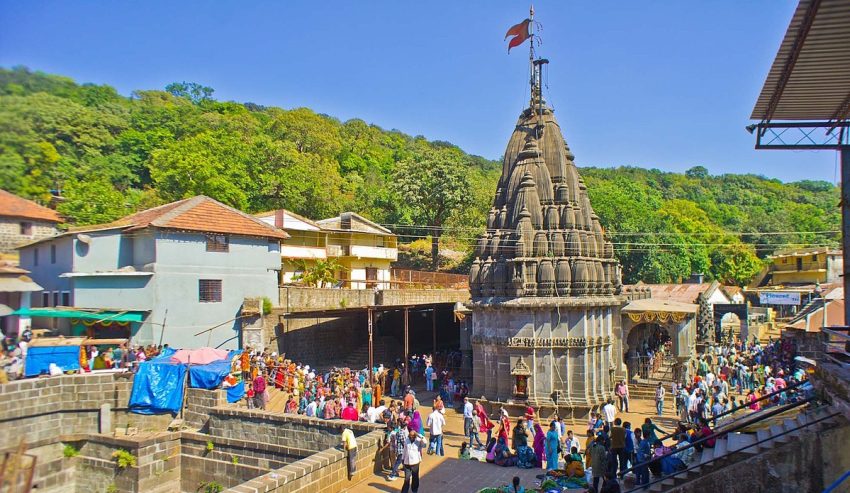Five of the twelve Jyotirlingas in India are in Maharashtra, a state with a rich cultural and religious heritage. These sacred shrines are very significant to Hindu devotees. In this blog post, we will look at the 5 Must-See Jyotirlingas in Maharashtra for Pilgrims. We will discuss what Jyotirlingas are, their history, reasons to visit them, and provide information about each of the five Jyotirlingas in Maharashtra.
What are Jyotirlingas?
The history of Jyotirlingas goes back to ancient times and has its roots in Hindu mythology. The term Jyotirlinga translates to linga of light and signifies the radiant presence of Lord Shiva. Twelve Jyotirlingas spread across India, each representing a different manifestation of Shiva. Pilgrims believe that visiting these sacred shrines will cleanse their sins and bring them closer to spiritual enlightenment.
Why Visit Jyotirlingas?
Visiting Jyotirlingas is not just a religious journey but also an opportunity to experience the spiritual and cultural essence of India. These shrines believed to be powerful sources of divine energy, offering a sense of peace and spiritual fulfillment. Pilgrims visit Jyotirlingas to seek blessings, perform rituals, and immerse themselves in the divine aura of Lord Shiva. Additionally, the journey to these sacred sites often takes travelers through scenic landscapes and culturally rich regions, adding to the overall experience.
History of Jyotirlingas
The history of Jyotirlingas goes back to ancient times and has its roots in Hindu mythology. According to legend, Lord Shiva appeared as a column of light, proving his supremacy over other deities. Believers say that the Jyotirlingas are the spots where these divine manifestations of Lord Shiva occurred. Each Jyotirlinga has its unique legend and historical significance, making them important pilgrimage sites for devotees. Millions of pilgrims visit these shrines every year, and they have been doing so for centuries.
How Many Jyotirlingas are in Maharashtra?
Out of the twelve Jyotirlingas in India, five are located in Maharashtra. These Jyotirlingas are:
- Trimbakeshwar Jyotirlinga, Nashik
- Bhimashankar Jyotirlinga, Pune
- Grishneshwar Jyotirlinga, Aurangabad
- Parli Vaijnath Jyotirlinga, Beed
- Aundha Nagnath Jyotirlinga, Hingoli
Now, let’s explore each of these Jyotirlingas in detail.
1. Trimbakeshwar Jyotirlinga, Nashik
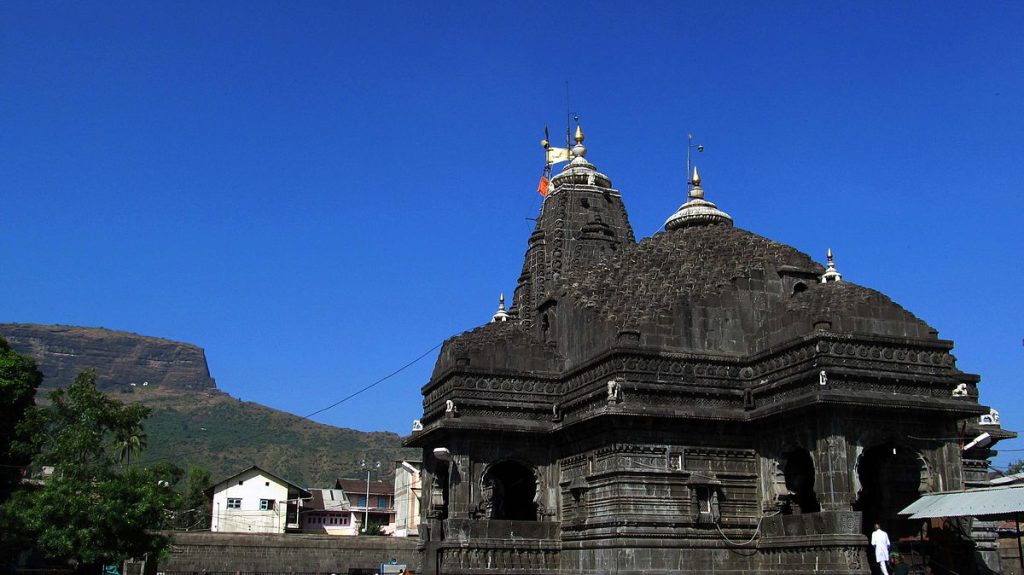
Located in the Nashik district, Trimbakeshwar Jyotirlinga is one of the most prominent Jyotirlingas in Maharashtra. Situated at the source of the Godavari River, this temple holds immense religious significance. The unique feature of Trimbakeshwar Jyotirlinga is its three-faced linga, representing Brahma, Vishnu, and Mahesh (Shiva).
History and Significance
According to legend, the sage Gautama performed penance here to bring the Ganges to earth. Pleased with his devotion, Lord Shiva manifested as Trimbakeshwar. The temple’s architecture is a blend of traditional and modern styles, with intricate carvings and sculptures adorning the walls.
Things to Do In & Around Trimbakeshwar Jyotirlinga
- Perform Abhishekam: Participate in the ritual of pouring water and other offerings over the linga.
- Visit Anjaneri Hills: Believed to be the birthplace of Lord Hanuman, offering trekking opportunities and scenic views.
- Explore Panchavati: A significant site related to the Ramayana, featuring temples and the famous Sita Gufa.
How to Get There
- By Air: The nearest airport is Nashik Airport, about 31 km away.
- By Train: Nashik Road Railway Station is the closest, approximately 28 km from the temple.
- By Road: Trimbakeshwar is well-connected by road and can be reached by buses or taxis from Nashik.
Best Time to Visit Trimbakeshwar Jyotirlinga
The best time to visit is during the winter months (November to February) when the weather is pleasant. Avoid visiting during the monsoon season due to heavy rainfall.
Things to Know Before Visiting Trimbakeshwar Jyotirlinga
- Dress Code: Wear modest clothing as it is a place of worship.
- Timing: The temple is open from early morning to late evening, but check for specific aarti timings.
Things to Avoid at Trimbakeshwar Jyotirlinga
- Avoid Photography: Photography inside the temple premises is usually prohibited.
- Avoid Carrying Leather Items: Refrain from carrying leather products as they are not allowed inside the temple.
2. Bhimashankar Jyotirlinga, Pune
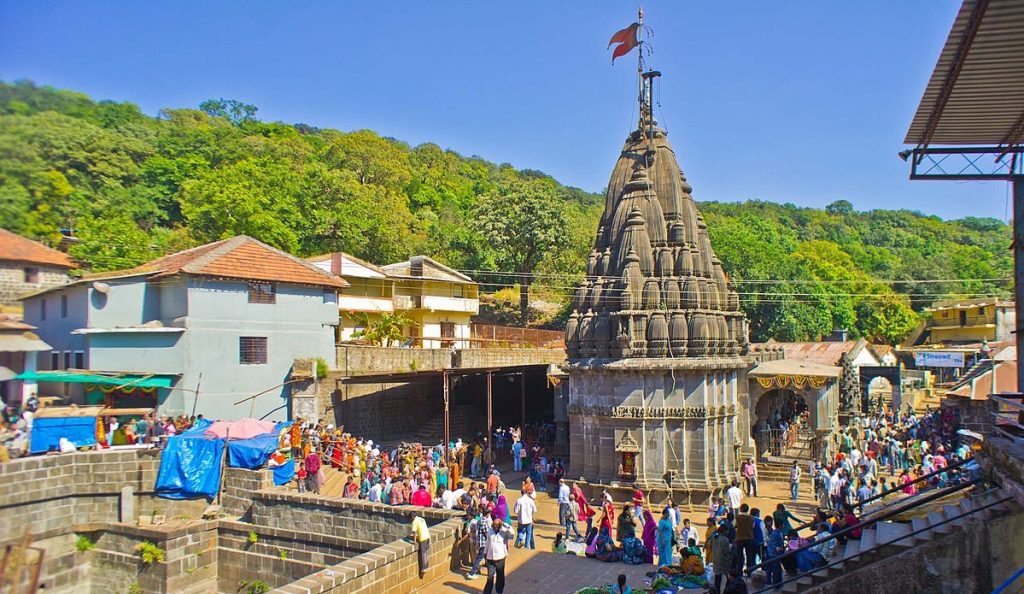
Nestled in the Sahyadri hills of Pune, Bhimashankar Jyotirlinga is surrounded by lush greenery and scenic beauty. The temple is a significant pilgrimage site and a perfect blend of natural beauty and spiritual serenity.
History and Significance
The legend of Bhimashankar Jyotirlinga is associated with the demon Tripurasura. Lord Shiva, in his Bhima form, destroyed the demon, and his sweat formed the Bhima River. The temple’s architecture is a mix of old and new styles, featuring intricate carvings and sculptures.
Things to Do In & Around Bhimashankar Jyotirlinga
- Explore Bhimashankar Wildlife Sanctuary: Home to diverse flora and fauna, including the Indian Giant Squirrel.
- Trek to Bhorgiri Fort: Offers a panoramic view of the surrounding hills and valleys.
- Visit Hanuman Lake: A serene spot for relaxation and nature walks.
How to Get There
- By Air: The nearest airport is Pune Airport, about 110 km away.
- By Train: Pune Railway Station is the closest, approximately 111 km from the temple.
- By Road: Bhimashankar is well-connected by road, with buses and taxis available from Pune.
Best Time to Visit Bhimashankar Jyotirlinga
The best time to visit is during the winter months (October to March) when the weather is cool and pleasant. Avoid the monsoon season due to heavy rainfall and slippery paths.
Things to Know Before Visiting Bhimashankar Jyotirlinga
- Dress Code: Wear comfortable and modest clothing suitable for trekking.
- Timing: The temple is open from early morning to late evening, but check for specific aarti timings.
Things to Avoid at Bhimashankar Jyotirlinga
- Avoid Littering: Keep the temple premises and surrounding areas clean.
- Avoid Loud Noises: Maintain the sanctity of the place by keeping noise levels low.
3. Grishneshwar Jyotirlinga, Aurangabad
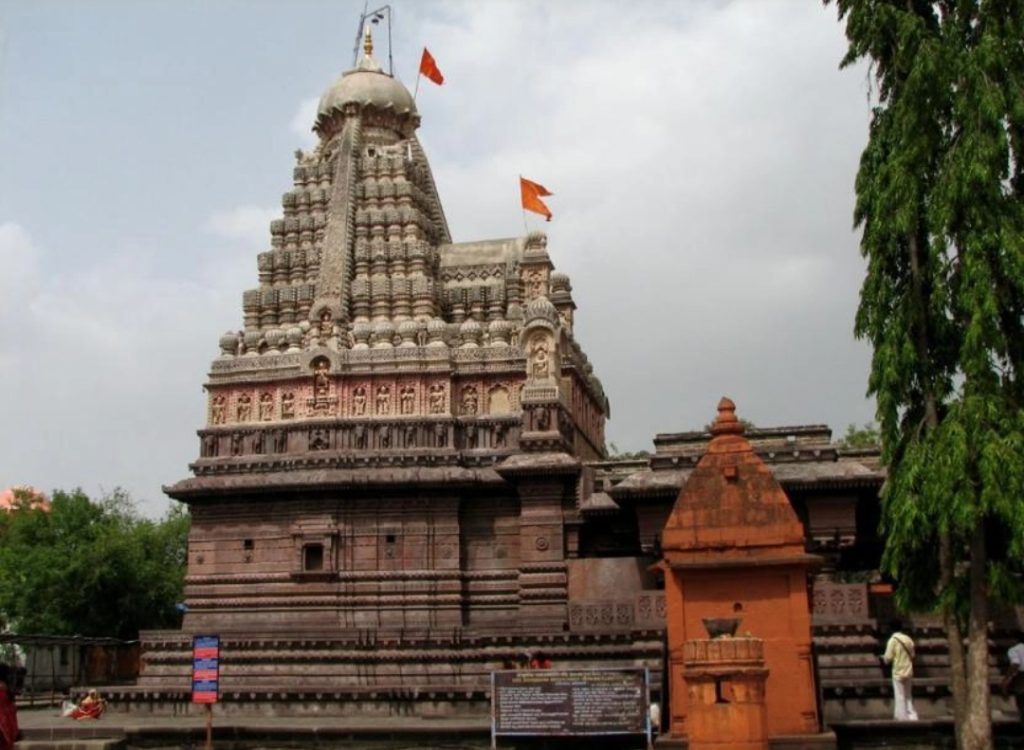
Grishneshwar Jyotirlinga, located near the Ellora Caves in Aurangabad, is the last of the twelve Jyotirlingas. The temple’s simple yet elegant architecture attracts pilgrims and tourists alike.
History and Significance
The legend of Grishneshwar Jyotirlinga is tied to a devout woman named Kusuma, who performed rituals devoted to Lord Shiva. Pleased with her devotion, Lord Shiva appeared as Grishneshwar. The temple was later renovated by Queen Ahilyabai Holkar in the 18th century.
Things to Do In & Around Grishneshwar Jyotirlinga
- Visit Ellora Caves: A UNESCO World Heritage Site with magnificent rock-cut temples and caves.
- Explore Daulatabad Fort: An impressive fort with historical significance and stunning views.
- Aurangabad Caves: Ancient Buddhist caves offering insight into historical rock-cut architecture.
How to Get There
- By Air: The nearest airport is Aurangabad Airport, about 36 km away.
- By Train: Aurangabad Railway Station is the closest, approximately 29 km from the temple.
- By Road: Grishneshwar is well-connected by road, with buses and taxis available from Aurangabad.
Best Time to Visit Grishneshwar Jyotirlinga
The best time to visit is during the winter months (October to March) when the weather is pleasant. Avoid the summer months as it can get quite hot.
Things to Know Before Visiting Grishneshwar Jyotirlinga
- Dress Code: Wear modest and comfortable clothing.
- Timing: The temple is open from early morning to late evening but check for specific aarti timings.
Things to Avoid at Grishneshwar Jyotirlinga
- Avoid Touching the Idol: Adhere to temple rules and avoid touching the deity.
- Avoid Carrying Prohibited Items: Follow temple guidelines regarding prohibited items like leather goods.
4. Parli Vaijnath Jyotirlinga, Beed
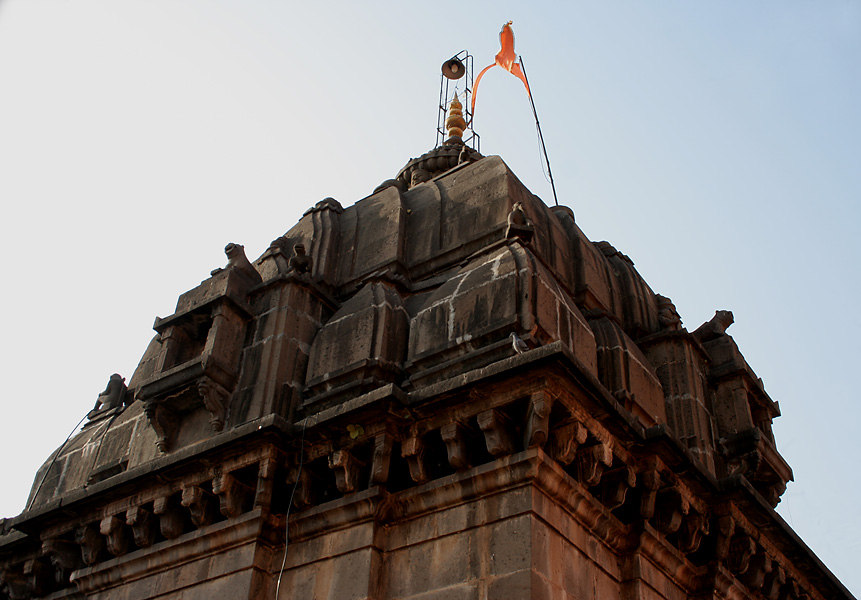
Parli Vaijnath Jyotirlinga, located in the Beed district, is a significant pilgrimage site for devotees of Lord Shiva. The temple is renowned for its unique architecture and spiritual ambiance.
History and Significance
The legend of Parli Vaijnath Jyotirlinga is associated with Ravana, who worshipped Lord Shiva to gain immense power. However, due to a series of events, the linga remained in Parli. The temple’s architecture showcases traditional designs with intricate carvings.
Things to Do In & Around Parli Vaijnath Jyotirlinga
- Visit Parli Thermal Power Station: One of the largest thermal power stations in Maharashtra.
- Explore Yogeshwari Temple: Another significant temple dedicated to Goddess Yogeshwari.
- Visit Kankaleshwar Temple: An ancient Shiva temple known for its architectural beauty.
How to Get There
- By Air: The nearest airport is Aurangabad Airport, about 186 km away.
- By Train: Parli Vaijnath Railway Station is the closest, approximately 2 km from the temple.
- By Road: Parli Vaijnath is well-connected by road, with buses and taxis available from nearby cities.
Best Time to Visit Parli Vaijnath Jyotirlinga
The best time to visit is during the winter months (October to February) when the weather is cool and pleasant. Avoid the summer months as it can get quite hot.
Things to Know Before Visiting Parli Vaijnath Jyotirlinga
- Dress Code: Wear modest and comfortable clothing.
- Timing: The temple is open from early morning to late evening, but check for specific aarti timings.
Things to Avoid at Parli Vaijnath Jyotirlinga
- Avoid Photography: Photography inside the temple premises is usually prohibited.
- Avoid Carrying Prohibited Items: Follow temple guidelines regarding prohibited items like leather goods.
5. Aundha Nagnath Jyotirlinga, Hingoli
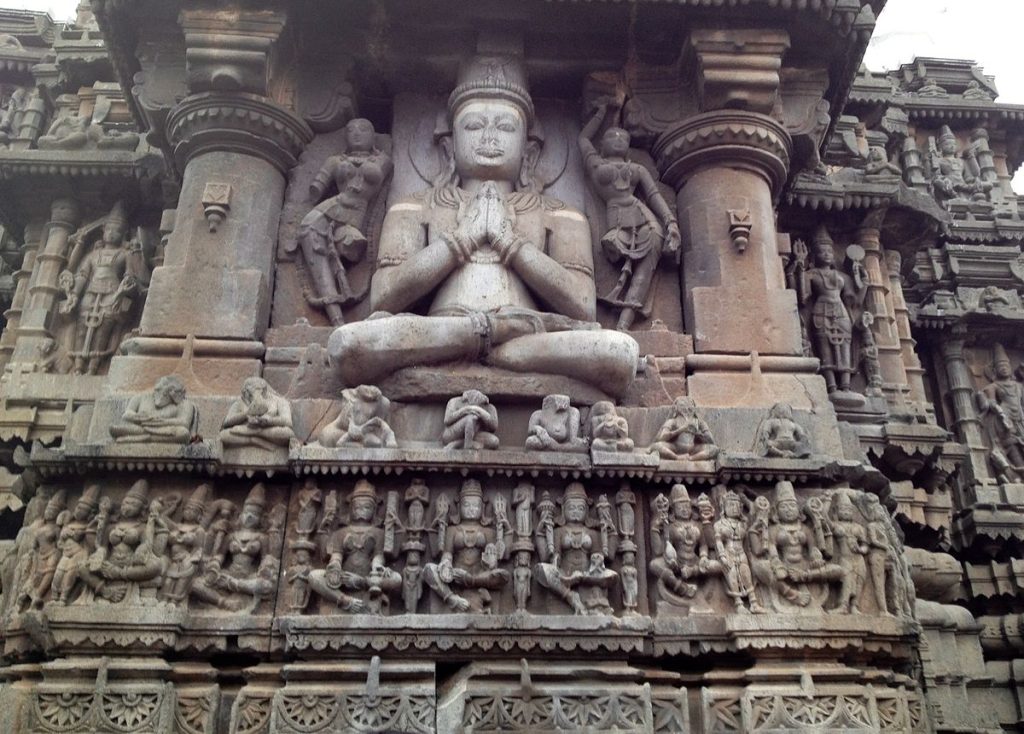
Aundha Nagnath Jyotirlinga, located in the Hingoli district, is one of the ancient and revered Jyotirlingas in Maharashtra. The temple is an architectural marvel and a significant pilgrimage site.
History and Significance
The legend of Aundha Nagnath Jyotirlinga is associated with the demon Ahiravana, who was killed by Lord Shiva. The temple’s architecture is a fine example of Hemadpanti style, with intricately carved pillars and sculptures.
Things to Do In & Around Aundha Nagnath Jyotirlinga
- Visit Siddheshwar Dam: A scenic spot ideal for picnics and relaxation.
- Explore Hingoli Fort: An ancient fort with historical significance.
- Visit Sant Namdev Sansthan: A place dedicated to the revered saint Namdev.
How to Get There
- By Air: The nearest airport is Nanded Airport, about 64 km away.
- By Train: Hingoli Railway Station is the closest, approximately 48 km from the temple.
- By Road: Aundha Nagnath is well-connected by road, with buses and taxis available from nearby cities.
Best Time to Visit Aundha Nagnath Jyotirlinga
The best time to visit is during the winter months (October to March) when the weather is cool and pleasant. Avoid the summer months as it can get quite hot.
Things to Know Before Visiting Aundha Nagnath Jyotirlinga
- Dress Code: Wear modest and comfortable clothing.
- Timing: The temple is open from early morning to late evening, but check for specific aarti timings.
Things to Avoid at Aundha Nagnath Jyotirlinga
- Avoid Touching the Idol: Adhere to temple rules and avoid touching the deity.
- Avoid Carrying Prohibited Items: Follow temple guidelines regarding prohibited items like leather goods.
Conclusion
Visiting the 5 must-see Jyotirlingas in Maharashtra is a journey of spiritual discovery and cultural exploration. Each Jyotirlinga offers a unique experience, blending divine energy with the rich heritage of Maharashtra. Whether you are a devout pilgrim or a curious traveler, these sacred sites are bound to leave a lasting impression on your soul.
FAQ about Jyotirlingas in Maharashtra
What are Jyotirlingas?
Sacred shrines dedicated to Lord Shiva, which represents his manifestation as a column of light.
Why should I visit Jyotirlingas?
Visiting Jyotirlingas cleanse sins, bring spiritual fulfillment, and offer a divine experience.
How many Jyotirlingas are there in Maharashtra?
There are five Jyotirlingas in Maharashtra: Trimbakeshwar, Bhimashankar, Grishneshwar, Parli Vaijnath, and Aundha Nagnath.
When is the best time to visit these Jyotirlingas?
The best time to visit is during the winter months (October to March) when the weather is pleasant.
What should I know before visiting Jyotirlingas?
Wear modest clothing, check temple timings, and follow temple rules regarding prohibited items and photography.
What should I avoid at Jyotirlingas?
Avoid touching the idols, carrying leather goods, and littering the temple premises.
Start this spiritual journey to the Jyotirlingas in Maharashtra and feel the divine presence of Lord Shiva among the state’s rich cultural heritage
For more fascinating travel destinations in India, don’t miss my detailed guide on the Top 10 Most Beautiful Stepwells in India. Dive into the architectural marvels of these ancient stepwells and enrich your travel experiences!
